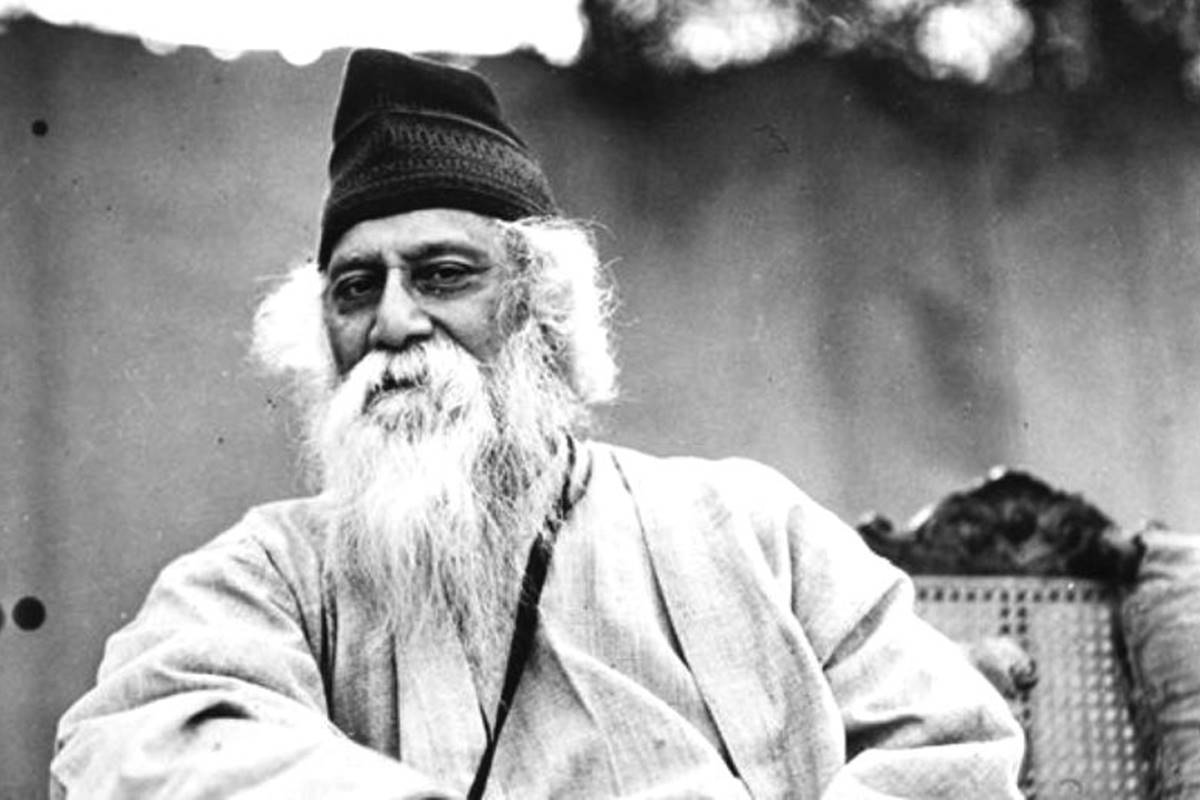Balmiki Pratibha takes the final bow with its 100th act
On Sunday, 17 November, Rabindra Sadan witnessed the 100th and final staging of Balmiki Pratibha, Rabindranath Tagore’s timeless tale of redemption.
Before India became popular for yoga, meditation and ayurveda, Tagore and Gandhi’s view of life was transmitted by Victoria Ocampo to the Spanish-speaking world, Gustavo Canzobre said.

Rabindranath Tagore
One ought not have any apprehension of the poet persona of Rabindranath Tagore being lost to science, as in against backdrop of a collage of science, literature, music and painting, he perceived a twin role for science and philosophy, noted scientist, Dr Bikash Sinha said today.
He was speaking at an international seminar on “The Enigma Of Science And Philosophy The Enduring Vision Of Rabindranath Tagore” at Rabindra Tirtha jointly organised by Tagore Centre for Natural Science and Philosophy (TCNSP) and Maulana Abul Kalam Azad Institute of Asian Studies (MAKAIAS).
Advertisement
Tagore was a citizen of the world who left an enduring legacy of universal culture, Dr Sinha, president, governing council, TCNSP, said. Such a legacy will be a healing balm to a restless world, he felt. A penchant for diverse fields of arts and culture, Tagore had a passion for science, Dr Sinha said. It found expression in his Viswa Parichay, he said. A multifaceted genius, Tagore sought to bring about a seamless cultural harmony, Dr Sinha said. The creativity and rhythm of science was his goal, he said.
Advertisement
Focussing up-close, thespian Soumitra Chattopadhaya felt a political leader linking cow milk with gold has made it all the more necessary to highlight the scientific temper of Tagore. It is regrettable that some voices in the ongoing sciene congress did not reflect the rationality that the occasion demanded, he said.
Tagore, the thespian said, was part of a period which saw the reawakening of rationality in this state. Recommendations of Ishwar Chandra Vidyasagar about education are pointers to this trend, he said.
Strengthened by Tagore’s rationality and scientific temper, it is time to oppose all sorts of superstition and obscrurantism, Chattopadhaya said. This is the right time to inculcate Tagore’s rationality in different aspects of our daily lives, he said.
Tagore’s message was one of unification and his interaction with Albert Einstein is about human perception, Ashoke Viswanathan from the Satyajit Ray Film and Television Institute (SRFTI) said. His scientific temper was reflected in his poems, he added.
Tagore’s Sriniketan endeavour was meant to explore every avenue of knowledge and activity for the uplift of the rural masses, Uma Dasgupta said, speaking on “Science, Philospphy, and Action in Rabindranath’s Sriniketan Endeavour”.
Srineiketan set out to educate the villagers in self-reliance and to bring back “life in its completerness in the villages,” she said.
In 1921, the first Collected Works of Tagore outside Bengal appeared in Germany, Martin Kampchen said, speaking on “Tagore. Goethe and Einstein-an Indo-German Communion”.
The German public, in their enthusiasm for Tagore, tried to integrate his personality and his ideas with German classical mainstream culture, away from exoticism and spiritual eccentricities, he said.
Before India became popular for yoga, meditation and ayurveda, Tagore and Gandhi’s view of life was transmitted by Victoria Ocampo to the Spanish-speaking world, Gustavo Canzobre said while speaking on “Tagore, Ocampo and Argentina Awakening of a New World”. While a professional scientist attempts to unravel the mystery of nature though experimentation and theory, Tagore viewed nature as the Creator’s laboratory, a view that finds expression in his numerous songs, Sushanta Dattagupta said while speaking on “Tagore’s Viswa Parichay, A Song Offering”.
Apart from Rabindranath’s inquisitiveness about planets and stars, he had an intense interest in the science behind the rendering of emotions to the human mind by music, Dipak Ghosh said, speaking on “Aesthetics and Science of Music, As Perceived by Rabindranath Tagore”. . This has been reflected in his writings “Grahagan Jiber Abashbhumi – Tattabodhini Patrika” (1874) and ” Sangeet O Bhab (1881) ” when he was in his teens, he said.
Advertisement